Embarking on the potty training journey with a 1-year-old can be exciting and challenging for parents. Potty training means the baby’s transition from diaper to potty chair or toilet; it involves mind and body.
How exactly does potty train a one-year-old baby?
Can I potty train a 1 year old?
Yes, you can potty train a one-year-old toddler, but it may take longer. Initially, notice the period of peeping and pooping at that time. You need to sit the baby on the potty chair or seat and make whistling or shushing noises.
You can start potty training even before 12 months, but at the age of 1 year, babies usually do not speak. You need to make a proper pee and poop schedule and alarm without any gap and do potty training because consistency makes it effortless. Each child has a different personality, so their learning process and duration may vary. With their training, they gradually learn to listen to the signs of bladder and bowel problems and how to empty the toilet, potty chair, or seat.
Pro tip
Remember to wear potty training pants or nappies during potty training, which save you from accidents.
Is it too early to potty train a one and a half year old?
Potty training a one or a-half-year-old can be considered early, as most children start showing signs of readiness between 18 and 24 months. However, individual readiness varies, and some children may exhibit early signs of interest and control over bodily functions.
However, the potty training at 12 months will be good practice if your baby is ready and feels excited. It also depends upon your strategy and how you motivate your little one.
While starting early, it’s crucial to approach the process with patience and a positive attitude. Remember that success may take time, and accidents are a natural part of the learning curve.
Is it safe to potty train a 1-year-old baby?
Yes, it is safe to potty train a 12-month-old baby if your baby is ready and enjoys the whole process; however, earlier potty training may take more time.
Potty training for a one-year-old is not as expected due to developmental factors and requires careful consideration. A one-year-old’s limited physical and communication abilities raise safety concerns. Even though some kids might seem ready at this age, it’s essential to put safety first while doing this.
Ensure that the potty or toilet training equipment is suitable for the child’s age, powerful, and safe. When it comes to potty time, keep a close eye on the child to avoid mishaps or falls. To establish a nurturing atmosphere, use kid-friendly language and rewarding behavior.
If your baby is not ready for training, you must force him to stop and wait for 4 or 8 months more.
How do I know if my one-year-old is ready for potty training?
Determining if your 1-year-old is ready for potty training involves observing their behavior and developmental cues. While it’s early for many children, some signs may indicate readiness. Here’s how you can assess if your 1-year-old is prepared for potty training:
1. Increased Awareness:
If your child shows signs of discomfort with dirty diapers or becomes aware of when they have a wet diaper, it could indicate a readiness for potty training.
2. Curiosity about the Toilet:
Your child may display interest in the toilet or demonstrate curiosity when others use it. This curiosity suggests an awareness of the bathroom environment.
3. Extended Periods of Dryness:
It might indicate bladder control development if your child can stay dry for extended periods, especially after naps.
4. Communication Skills:
If your child has started communicating basic needs or shows signs of understanding simple instructions, it may indicate readiness for potty training.
5. Ability to Follow Simple Commands:
If your child can follow basic instructions or is beginning to show signs of independence, such as wanting to dress or undress themselves, it suggests cognitive and motor skill development.
6. Expressing Discomfort with Diapers:
Some children may express discomfort with wearing diapers and may attempt to remove them. This could be a sign of readiness to transition to underwear.
7. Consistent Bathroom Timing:
If your child tends to have regular bowel movements at predictable times, it may be an opportunity to introduce the potty during these periods.
8. Physical Readiness:
Physically, if your child can walk steadily and sit independently, it may be easier to introduce them to a potty.
9. Interest in Independence:
If your child is showing signs of wanting to do things independently, such as feeding themselves or choosing their clothing, they may be ready for the independence associated with potty training.
It’s important to note that every child develops at their own pace, and readiness signs can vary. Suppose you notice several of these signs, and your child seems interested. In that case, you can gently introduce the concept of potty training. However, it’s OK to wait and try again later if there is resistance or disinterest. Always ensure that the process is joyous and free from pressure.
How do you start potty training a one-year-old baby?
In the child’s developmental stage, potty training a one-year-old requires a gentle and patient approach. For many children, it’s still early, but some might exhibit indications of readiness. With a one-year-old, follow these steps to begin the potty training process:
1. Readiness Signs:
Look for signs such as increased awareness of wet or soiled diapers, discomfort with dirty diapers, or curiosity about the toilet.
2. Introduction to the Potty:
Introduce a child-sized potty or a seat reducer for the regular toilet. Allow the child to explore and become familiar with the potty.
3. Routine and Timing:
Establish a consistent routine for potty time, especially after meals or upon waking. Timing is crucial for associating the potty with specific events.
4. Positive Reinforcement:
Use positive reinforcement like clapping, cheering, or offering a small reward when the child successfully uses the potty. Encourage their efforts, even if it’s just sitting on the potty.
5. Demonstration:
Allow the child to observe older siblings or adults using the toilet. Children often imitate behaviour, which can create an interest in using the potty.
6. Comfortable Clothing:
Dress the child in clothing that is easy to remove. This promotes independence when attempting to use the potty.
7. Be Patient:
Understand that accidents will happen. Stay patient, avoid showing frustration, and reassure the child during setbacks.
8. Communication:
Use simple language to communicate about the potty. Create a word or phrase that the child associates with using the potty.
9. Celebrate Small Achievements:
Celebrate each successful attempt to create a positive association with the potty. Small celebrations can boost the child’s confidence.
10. Consult with Paediatrician:
Before starting early potty training, consult your paediatrician to ensure it aligns with your child’s developmental milestones and overall health.
Remember, every kid is different, and so is their readiness. Please pay attention to your child’s cues, adjust their speed, and create a stress-free, enjoyable potty training experience.

Remember, every kid is different, and so is their readiness. Please pay attention to your child’s cues, adjust their speed, and create a stress-free, enjoyable potty training experience.
Any tips for potty training a 1-year-old?
Certainly! Potty training a 1-year-old requires a gentle and patient approach. Here are five unique tips to help you in the process:
1. Create a Potty Corner:
Designate a specific area in your bathroom as the “potty corner.” Decorate it with colorful and engaging elements to make it a welcoming space. This can make the process more exciting for your little one.
2. Use a Potty Training Doll:
Introduce a potty-training doll that “uses” the potty. Children often enjoy mimicking the actions of toys. Encourage your child to let the doll demonstrate how to use the potty, making it a fun and educational experience.
3. Potty Training Songs and Rhymes:
Develop catchy and simple potty training songs or rhymes. Singing during potty time can make it more enjoyable and help your child associate positive emotions with the process.
4. Interactive Potty Books:
Invest in interactive potty training books with buttons or flaps. Reading a book together while sitting on the potty can be a delightful way to engage your child and make the experience more interactive.
5. Celebratory Potty Dance:
Create a celebratory potty dance that you do together after successful potty attempts. This adds an element of fun and excitement, reinforcing the positive behavior and creating a sense of accomplishment for your child.
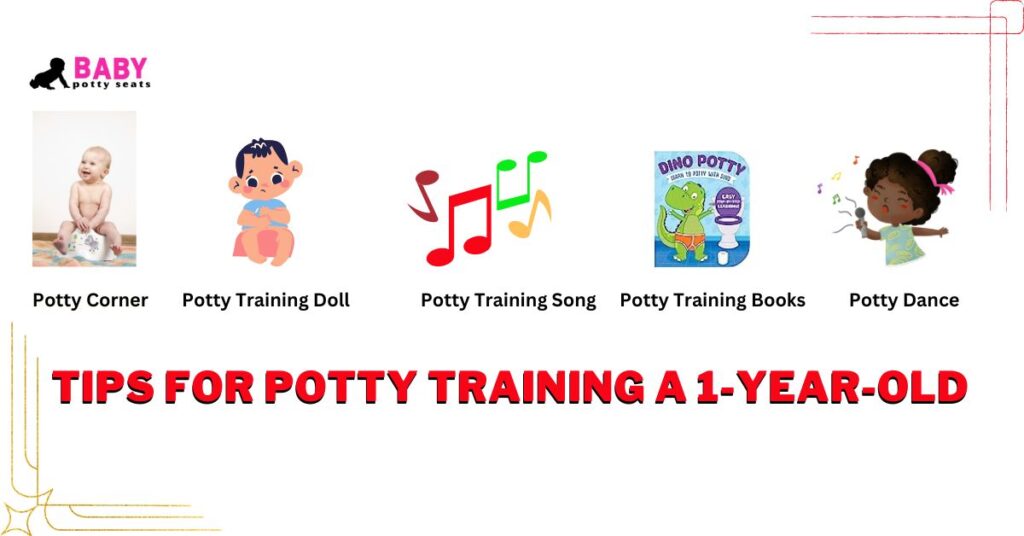
Remember, encouragement and patience are the most important things during this early potty training phase. Adjust these suggestions to your child’s preferences and personality to ensure a fun experience for both of you.
My son is one and walking. Can I start potty training?
Yes, your son’s ability to walk is a good indicator that potty training should begin. Walking is a sign of enhanced motor abilities and a degree of physical preparedness for specific steps in the process.
You start by making a schedule and initially use the potty training chair or seat for starting potty training.
Frequently Asked Questions
Related Article: 5 Top Infant Potty: What Is The Best Potty For Infant Potty Training?



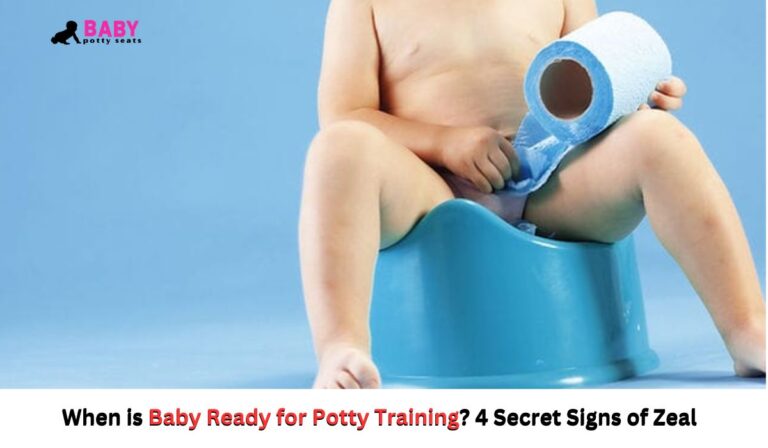
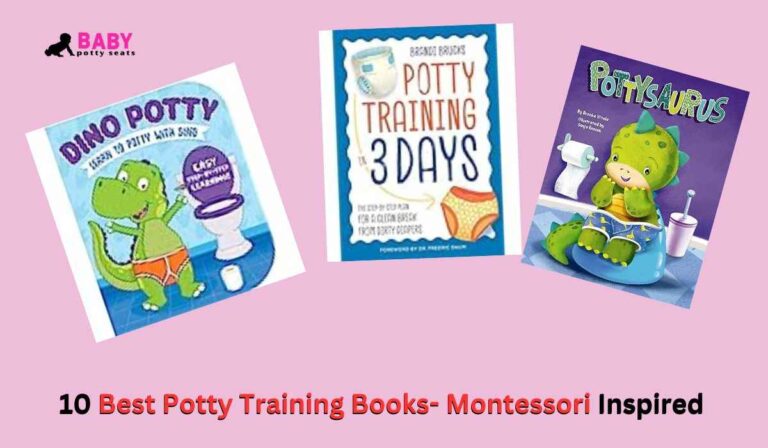
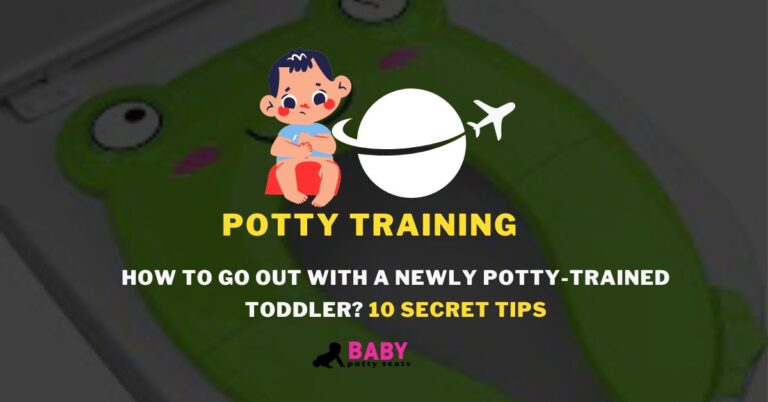


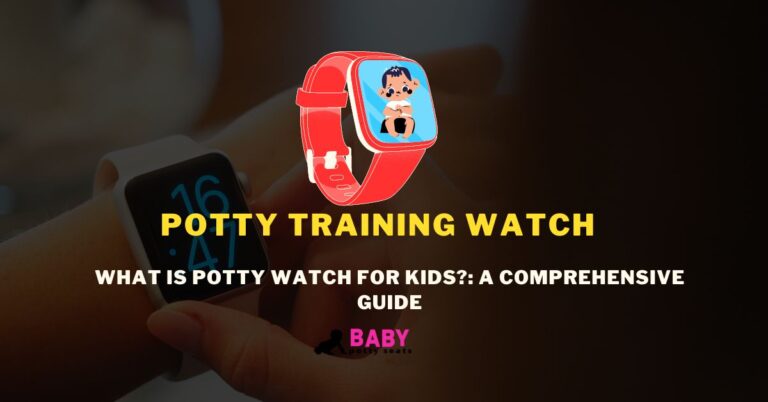
2 Comments
Comments are closed.